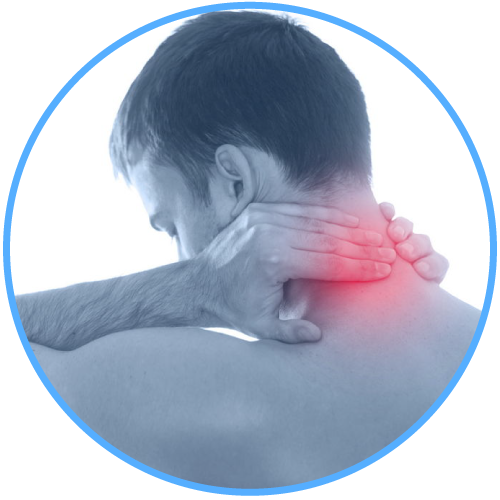
Whiplash
Whiplash is an injury to the neck that usually occurs in a road traffic accidents. It affects the soft tissue (neck muscles) but can also involve the spinal joints and ligaments, nerve roots, and lower back. It is an injury resulting from a sudden extension and flexion of the neck. Average recovery time for a whiplash injury is a few weeks but may be longer depending on the speed and the position of the head during injury. Typical treatment for whiplash includes joint mobilizations, soft tissue release and education on posture to reduce pain and restore optimal function quickly.
Neck arthritis
Neck Arthritis is a joint disorder causing inflammation in one or more joints in the neck. It is common in adults 65 and older, but it can affect people of all ages.
The symptoms of neck arthritis include chronic pain, muscle weakness, numbness, stiffness, headaches and reduced movement of the neck.
Cervicogenic headache
Headaches can sometimes be caused by the neck. These headaches are called “cervicogenic headaches.” Cervicogenic headaches are sometimes misdiagnosed as either migraine headaches or cluster headaches, both of which originate in the head. Cervicogenic headaches typically causes pain at the back of the head. This pain may refer to the top of the skull and sometimes to the forehead or temple. Cervicogenic headaches are typically caused by increased muscular tension as a result of poor postures/ergonomics at work. Treatment typically includes soft tissue release, joint mobilisations and ergonomic advise and assessment.
TMJ
Temporomandibular joint dysfunction (TMD, TMJ, TMJD) is an umbrella term covering pain and dysfunction of the muscles of mastication and jaw joint itself.
Herniated/ prolapsed disc
A bulging disc in the neck is a common condition in which the nucleus (inner portion) of a spinal disc remains contained within the annulus fibrosus (outer portion), unlike a herniated disc in which the nucleus leaks out of the disc. This can cause nerve root compression causing symptoms of numbness, pins and needles, loss of power and function of the arms and hands. Treatment for a disc prolapse includes reducing the nerve root compression through a variety of manual therapy techniques and then subsequently strengthening the neck muscles to restore pain free range of motion.



